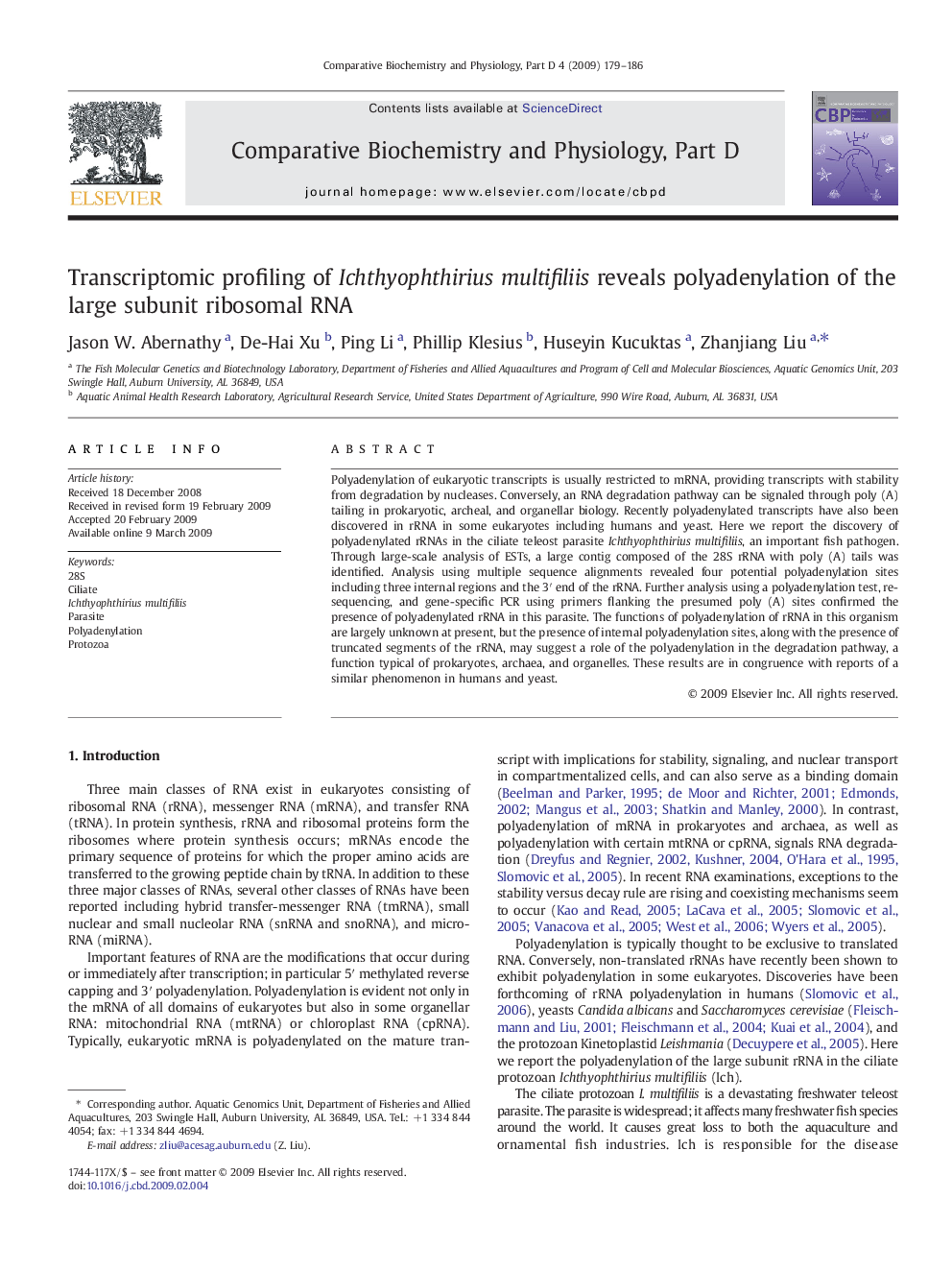| Article ID | Journal | Published Year | Pages | File Type |
|---|---|---|---|---|
| 1978910 | Comparative Biochemistry and Physiology Part D: Genomics and Proteomics | 2009 | 8 Pages |
Polyadenylation of eukaryotic transcripts is usually restricted to mRNA, providing transcripts with stability from degradation by nucleases. Conversely, an RNA degradation pathway can be signaled through poly (A) tailing in prokaryotic, archeal, and organellar biology. Recently polyadenylated transcripts have also been discovered in rRNA in some eukaryotes including humans and yeast. Here we report the discovery of polyadenylated rRNAs in the ciliate teleost parasite Ichthyophthirius multifiliis, an important fish pathogen. Through large-scale analysis of ESTs, a large contig composed of the 28S rRNA with poly (A) tails was identified. Analysis using multiple sequence alignments revealed four potential polyadenylation sites including three internal regions and the 3′ end of the rRNA. Further analysis using a polyadenylation test, re-sequencing, and gene-specific PCR using primers flanking the presumed poly (A) sites confirmed the presence of polyadenylated rRNA in this parasite. The functions of polyadenylation of rRNA in this organism are largely unknown at present, but the presence of internal polyadenylation sites, along with the presence of truncated segments of the rRNA, may suggest a role of the polyadenylation in the degradation pathway, a function typical of prokaryotes, archaea, and organelles. These results are in congruence with reports of a similar phenomenon in humans and yeast.
